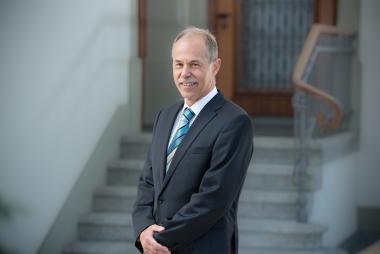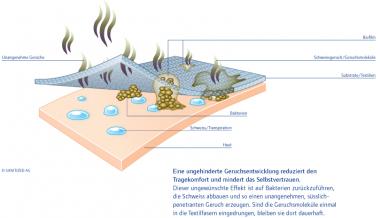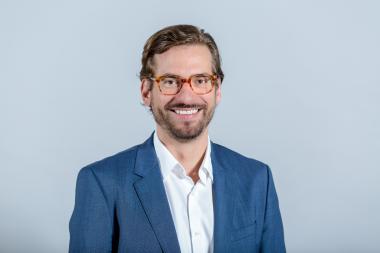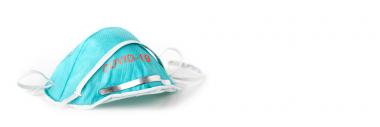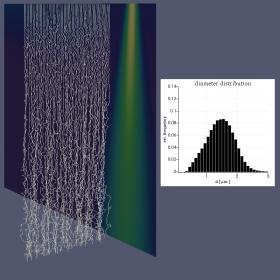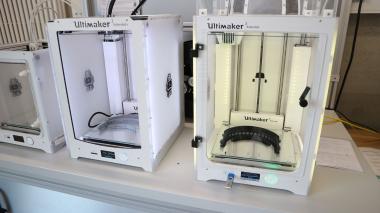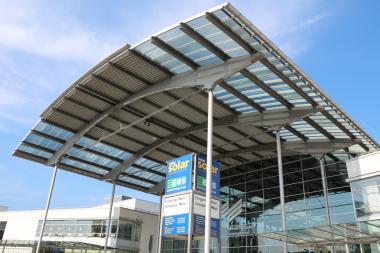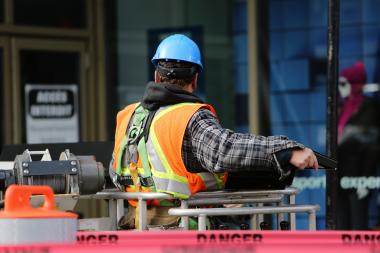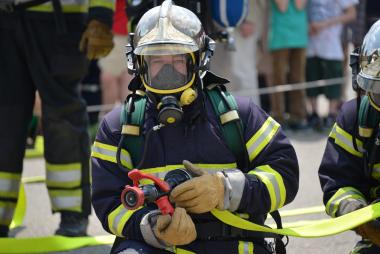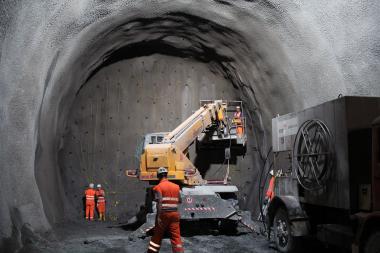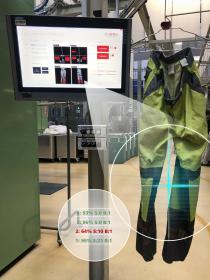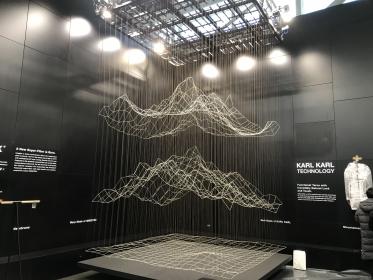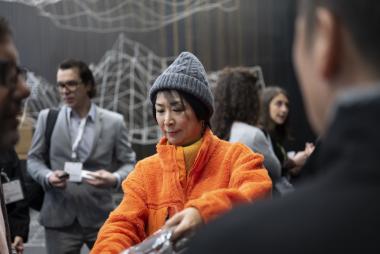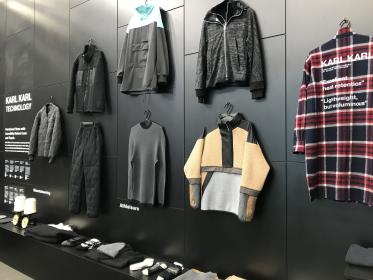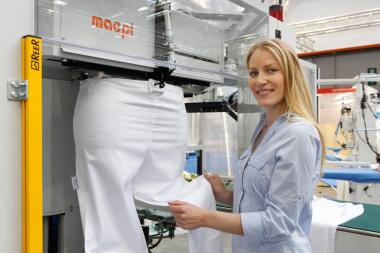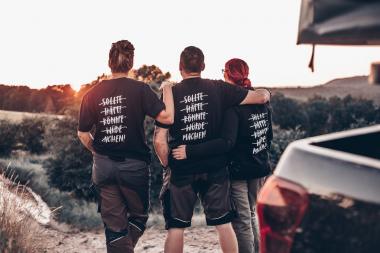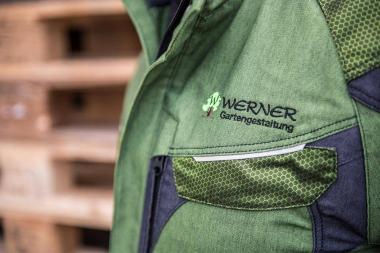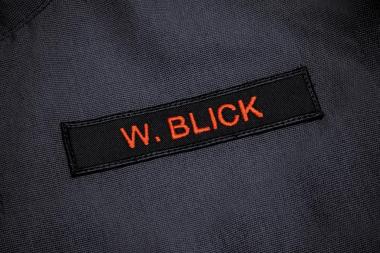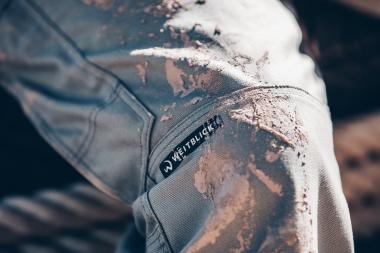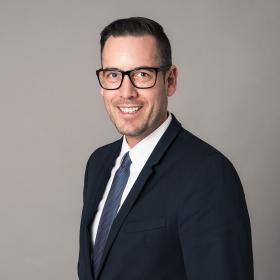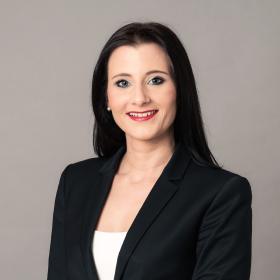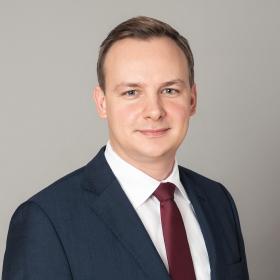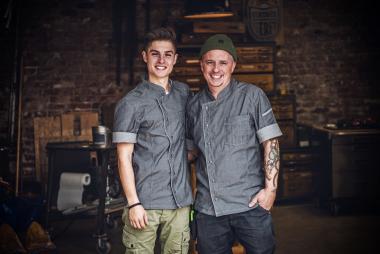‘WHAT SMELLS LESS HAS TO BE WASHED LESS OFTEN’
Swiss Quality Principles plus Innovation Strength: Hygiene and Material Protection from SANITIZED
SANITIZED AG is known as a worldwide leading Swiss company in hygiene functions and material protection for textiles and plastics. Globally oriented, pioneering work is done with federal thoroughness in the development of innovative, effective and safe technologies for antimicrobial equipment. Textination had the opportunity to speak to CEO Urs Stalder about the growing importance of hygiene in times of the pandemic.
Founded in 1935, the majority ownership of the public company SANITIZED still lies with the founding families. You are the market leader in Europe in hygiene functions and material protection for textiles and plastics. If you had to introduce yourself in 100 words to someone who doesn't know the company: What influenced you in particular in the development of the company and what made it unique?
Preventing odor in shoes, that's how it started in 1935. This is where our business model came from: the antimicrobial protection of plastics and textiles.
SANITIZED develops ready-to-use additives that are individually tailored to the protection goals of the end products and that work, for example, against the development of odors in work clothing, against permastink (resilient odors) in synthetic textiles or against mold growth.
The 360-degree service is unique: This includes backing in product development, support for all regulatory questions and assistance with marketing topics.
SANITIZED AG is globally active and yet committed to Swiss quality principles. More than 400 brands worldwide use the ingredient brand Sanitized® on their end products.
Think global – act local? You have sister companies in France, the United States and Asia. Your roots and headquarters are based in Switzerland. The pandemic is currently increasing the question of intact supply chains. What does this mean for your company in the future?
Indeed, the broad global positioning enables us to do business locally. The local anchoring results in synergies, also in sourcing. That will be even more important for us in the future. And, of course, the issues of speed and customer proximity are also positive aspects of this approach.
From textiles to plastic surfaces to cans: SANITIZED Preservation AG was founded in 2018 to take care of colors and coatings. SANITIZED is thus opening up another market. Which markets are you particularly interested in and which product areas do you feel particularly challenged by?
Customers want paints and varnishes without solvents, which is better for people and the environment. But with the alternative water-based products, there is a high risk of contamination by microbes. This starts with the production, continues with the storage in the can and also in the application. The result is mold formation.
Antimicrobial protection for paints or coatings is particularly relevant in hygiene-sensitive areas of industrial production and, of course, in the medical environment. The risk of contamination and mold multiplies in regions with high air humidity. This is another reason why India is a growth market for this business area.
To break new ground means decisiveness, overcoming fears - and thus the courage to fail. Not every project can succeed. In retrospect - about which entrepreneurial decision are you particularly glad to have made it?
Let me mention just three decisions that are important for corporate development: This is definitely the foundation of the SANITIZED Preservation division. This is about the antimicrobial protection of paints and varnishes. This also includes setting up our in-house TecCenter, in which we can perform laboratory services even faster. It was recently accredited by the International Antimicrobial Council. And right now it is the sales cooperation with Consolidates Pathway on the US market for our textile hygiene function solutions.
You state that innovation is embedded in the company's DNA. How do you live your inno-vation management and which role do the requirements of end consumers and your indus-trial customers play in this setting?
We ourselves as well as our global sales partners are in close contact with the manufacturers of textile products. This is also why we know the requirements and needs of the market. Sustainability is emerging from the niche in the mass market.
This is exactly what our product Sanitized® Odoractiv 10 has been developed for and awarded by the Swiss Innovation Award.
It is a dual-acting, biocide-free, patented technology against odor development and odor adsorption in textiles. Many customers appreciate our expertise and use it in the development of new products to create innovative textiles with additional benefits for the requirements of the market.
Tailor-made or solutions only for major customers? The topic of individualization up to lot size 1 takes up a lot of space today. What do you think about individual product solutions - or can you cover everything with the SANITIZED portfolio comprising 40 products?
We have a very versatile technology “kit” at our disposal. It is part of our daily business to respond individually to the special customer needs and the respective product requirements. We offer tailor-made recipes for this and our extensive application know-how flows into the advice for the individual application situation at the customer.
There are various definitions for sustainability. Customers expect everything under this term - from climate protection to ecology, from on-site production in the region to the ex-clusion of child labor, etc. Textile finishing does not always sound unproblematic. Public procurement is increasingly switching to sustainable textiles. What does this mean for SANITIZED and what do you do to bring the concept of sustainability to life for your company, and which activities and certifications do you focus on?
Resource conservation is a key issue for us. Since we “think” about the topic of sustainability along the entire production chain, including in research and development, resource-saving application techniques for the textile industry are important to us. Sanitized® additives can be integrated into standard production processes, so that additional energy is not required for complementary finishing processes.
Our portfolio also includes biocide-free products. Sanitized® Odoractiv10 prevents odors from sticking to textiles. Sanitized® Mintactiv uses the natural antibacterial effect of mint and was specially developed for cotton textiles.
And what smells less has to be washed less often. This saves water and electricity and extends the useful life of textiles.
SANITIZED supports its customers with a so-called 360° service. What do you mean by that and why don't you concentrate exclusively on the technical aspects of the products?
The SANITIZED brand wants to create real added value for its customers. That is why we have expanded our core competence as a developer and provider of innovative antimicrobial additives with an all-round service. The obvious thing to do is to support the production process, of course that is part of it. Furthermore; we also provide the latest knowledge on regulatory issues - world-wide. And we offer comprehensive marketing assistance for our license partners who use Sanitized® as an ingredient brand. Making correct advertising statements is important not only in times of Corona. Because it's always about transparency and security for people. Warning letters or delivery stops due to incorrect claims can be prevented.
Cooperation with the institutes is absolutely sensible; after all, it is their job to do research for com-panies that they cannot shoulder on their own. This includes testing facilities, as well as applying for funding, which is only possible in cooperation with research institutes. However, they are public institutions and therefore have different objectives per se than a company: We have to bring a promising idea to the market as quickly as possible to show a profit. A research institute does not have this pressure.
Which goal do you pursue with the website https://www.sanitized.house for example?
Yes, it may seem unusual when SANITIZED as a B2B company designs a platform for end customers. But more than 400 brands use Sanitized® as an ingredient brand. So, we are connected to the end customer in this way.
In the virtual house - Sanitized® the house -, visitors can playfully experience in which areas of life hygiene and material protection contribute to the quality of life. A click in the wardrobe links to products - including brand names - that have been equipped with Sanitized®: clothing in the wardrobe, the carpet in the living room or the towel in the bathroom. The best thing to do is try it yourself.
The company is working consistently on implementing Sanitized® as a brand. The hygiene function for textiles and plastics shall be documented and thus offer added value to customers and consumers. Co-branding is not always welcome, especially in the clothing, sports and outdoor sector. How rocky was the road until Sanitized® was advertised as an ingredient brand by 400 license partners on the product?
Of course, there are brands that do not want a second brand on their end product. But a trend is causing more and more manufacturers to rethink: Customers are increasingly asking questions about ingredients and their origins. Elucidation and transparency are growing needs. And that's exactly what we contribute to. In addition, this is an opportunity for a textile brand to stand out positively in the flood of suppliers. Differentiation through added value - donated by Swiss technology from SANITIZED. Those arguments work worldwide.
You have a diversified network. Just to mention to two of them - you have been a system partner since the foundation of bluesign® and you work closely with Archroma in sales matters. In which aspects do you see the special value of partnerships? Are there segments existing where you can imagine new partners and collaborations?
Partnerships are important and work if all pursue common goals and can mutually fertilize each other. For example, the partnership with the company Consolidates Pathway in the United States is brand new one.
For which socially relevant topics do you see a particularly great need for innovation and action in the next 5 years? What is your assessment that your company will be able to offer solutions for this with its products? And what role do the experiences from the corona pandemic play in this assessment?
Nobody can predict what the corona pandemic will change in the long term. Environmental protection and thus the conservation of our resources is and remains an important issue.
The fact that the textile industry can make a big contribution to this is slowly gaining awareness among the masses. Keywords are cheap production or water consumption for jeans production. People are becoming more sensitive to what companies and brands are doing. It will be all the more important to act and communicate openly and transparently.
For SANITIZED, it is a mission and a matter of course that only products with official approvals are used and that we work ac-cording to the bluesign principle. This is where traceability and transparency begin.
This interview was conducted by Ines Chucholowius, CEO Textination GmbH
Textination GmbH




